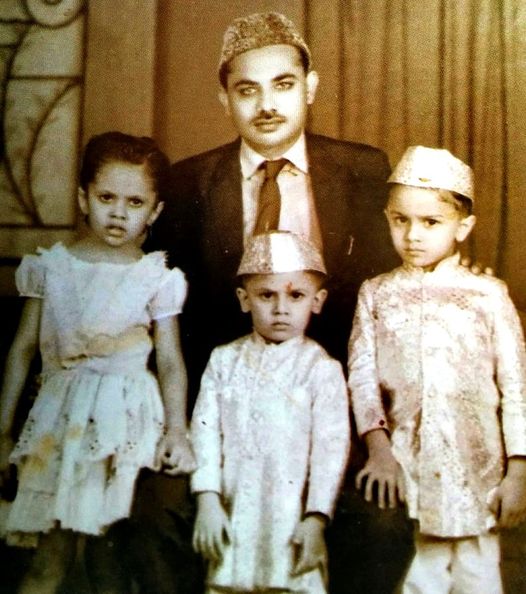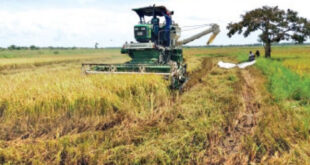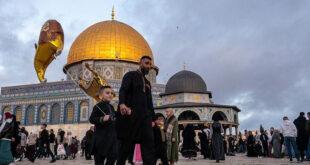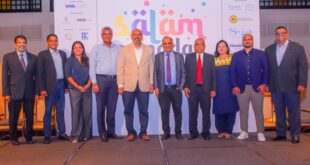The Memons of Sri Lanka like the Bohras are a highly cultured community of Indian origin. They are Sunni Muslims following the Hanafi school of Muslim Law who originated from Western India, especially from the Kathiawad Peninsula before making our beloved country their home. Their settlement here took place during the British colonial period when they arrived here as textile merchants before diversifying into other areas like exports and garment manufacturing in the post-independence period. Some of our largest companies like Expolanka and Brandix were founded by Memons.
MAJOR LIFE EVENTS
The customs of the Memons relating to the major events of life do not differ much from that of the Muslims of India. The birth of an infant is an occasion for joy and thanksgiving among the Memons as of any other Muslim people.
Childbirth (pedaish) is followed by two important rituals that have their foundations in the Islamic faith. One is the Aqeeqa, a religious rite involving the ritual sacrifice of an animal as a thanksgiving to God for blessing one with offspring which takes place on the seventh day after birth.
This ritual involves the sacrifice of two sheep for a male child and one for a female child. However due to the want of sheep in the country, goats invariably take their place. The meat thus obtained is distributed among relatives and the needy. It is also on this occasion that the child’s head is shaved and the weight of its hair given in silver or gold to the needy.
The *chatthi *or naming ceremony which is the equivalent of the Islamic *tasmiyya *is held sometime after the fortieth day when the mother has passed her period of ritual impurity following childbirth (nifas). The ceremony may also involve the parents of the mother presenting their grandchild with a cot. Circumcision (*khatna *or sunnat), another important religious rite, is performed in early childhood though there does not appear to be any fixed time for the operation.
There are several preliminaries to marriage (*viyah *or shadi) among the Memons who go to great pains when it comes to celebrating a marriage, even to the extent of indulging in various pre-nuptial ceremonies. The proposed match is usually initiated by the boy’s parents who would make a proposal (ghal) to the girl’s parents, either directly or through relatives or friends. If accepted, there takes place what is known as the nāthrō or engagement which is confined to the immediate family circle and takes place at the girl’s residence.
The first ceremony relating to the engagement is what is known as *mithomu *(Lit.sweetening of the mouth) where a sweetmeat known as kheer-kumā made of milk, sugar, almonds, pistachios, cashewnuts and vermicelli figures as the main item. Then follows the vado mithomu feast held on a larger scale with friend and the extended family being invited to the girl’s residence or a public hall for lunch, dinner or a tea party. The proposed bridegroom also attends the function and is presented with gifts such as clothes and perfumes while his party would present his intended bride with jewellery.
Then comes the *sare *where the proposed bridegroom’s parents invite the intended bride and her extended family for lunch. Then comes the *ato *where the intended bride’s family invites the proposed bridegroom and his extended family for lunch or dinner.
A few days or about a week before the wedding takes place, there takes place what is known as the vanna party where the bride’s parents display all the items they are giving to their daughter such as furniture, clothes and jewellery which are collectively known as dēj. It is during the course of this party that there takes place a custom known as din-ginan (Lit.giving and taking), an all-female affair which involves the bride’s party making presentations of jewellery and/or cash to the bridegroom’s mother and sisters as well as other female relatives.
This is reciprocated by the bridegroom’s party who likewise make presentations of gold or cash to the bride’s party. It is on this occasion that the bridegroom’s party brings with them the wedding attire (sarara) and jewellery (dagina) for the bride. These items which are presented to the bride along with coconuts and rock candy (crystalized sugar lumps) are collectively known as piro. It is also on this occasion that the *dandiya *is performed where young women get together and play with sticks known as dandiya, a practice very common in India as well.
Then follows the *khoro *ceremony which is usually a lunch held at the bride’s house and meant only for women. On this occasion the female relatives of the bridegroom pay a visit to the bride, bringing along with them items such as pistachio, almonds and rock candy which are then placed on a cloth placed on the bride’s lap.
The day selected for the wedding is usually based on convenience such as availability of the wedding hall and the day so selected is usually a holiday or the eve of a holiday, very often weekends. Weddings however do not usually take place in the month of Safar, Ramazan or the first ten days of Muharram.
About one or two days before the wedding, yellow turmeric paste known as *pitih *would be applied on the bride’s body and on that night also takes place the *mehendi *ceremony, an all-female affair which involves the application of henna on the bride’s hands and feet. On this occasion, the womenfolk of the groom’s family bring along with them mehendi, a moist preparation made with
the crushed leaves of the Henna or Egyptian Privet (Lawsonia Inermis) as well as a cake and baskets of fruits and sweets.
The bride would have in her palm an open betel leaf on which each member of the groom’s family would apply a little mehendi as a symbolic gesture. The female relatives of the bride would then apply henna on one another while the bride herself is usually done by a professional female henna artist who would apply the mehendi in such a manner as to form intricate designs on her hands and feet. The bride may also be fed with a sweetmeat and garlanded with flowers on this occasion.
On the morning of the wedding day, the preliminaries to the *nikah *or the marriage proper takes place, beginning with the ritual known as the viaji raja where the consent of the bride for the marriage is sought. This little ritual involves the agent or guardian of the bride and the two witnesses to the marriage contract seeking her consent as it is they who would contract the marriage on her behalf. The nikah ceremony usually takes place in the Memon Hanafi Mosque in Third Cross Street, Pettah.
The participants, all of whom are male, are served dates (khajur) and rock candy (shakkar) and the nikah and registration takes place after the Asr prayers. This is followed by dinner at the Memon Hall in Kollupitiya or some other public hall or hotel. Here, both men and women participate though segregation is followed with the males and females being accommodated in separate rooms. The bride (dulan) is seated in the same room occupied by the female guests while the bridegroom (*dulo *or varrajah) is escorted by his retinue to the bridal throne where he takes his seat beside his bride.
Then follows the *likheti *where the bride is taken to the bridegroom’s residence for the first night and this concludes the wedding. A few days after the wedding, a sort of homecoming ceremony known as *sattaro *takes place where the bride’s party invites the bridegroom’s family and the bride for lunch or dinner and this concludes the festivities associated with marriage among the Memons.
DRESS AND ORNAMENTATION
Although the usual attire of Memon men today is shirt and trousers when outdoors or shirt and sarong when at home, Some, particularly the more religiously inclined may wear the jubba, a long robe for an upper garment and trousers or sarong for a lower garment.. The men of an older generation, particularly those of a
higher standing, are said to have worn the sherwani, a long flowing overcoat of a black colour, white trousers known as *ijar *and a velvet jinnah cap in common with many of their more affluent Muslims of the subcontinent. The middle classes usually wore a long shirt extending down to the knees known as *qamiz *and white trousers known as ijar. They also often wore when going outdoors a tall red fez cap with black tassel which they termed gonda topi.
The usual dress of Memon women today is the salvar qamiz, a beautiful two-piece garment of Punjabi origin comprising of loose trousers (salvar) fastened by a string and a long tunic (qamiz) often long-sleeved and reaching down to the knees. It is usually worn with a *dupatta *or shawl which is used to cover the hair in keeping with Islamic norms. The *sarara *worn by Memon brides on their wedding day consists of a long skirt heavily worked in sequins and gold thread, a bodice and a shawl to match. The women of the older generation wear a long gown of a light colour known variously as abo, *farak *or *gavan *(the last two words being corruptions of the English frock and gown) which is tightened at the waist and extends to the feet. Underneath this garment may be worn loose trousers known as pijama.
Local Memon women like their sisters in India are extremely fond of jewellery and take great pains to adorn themselves with a variety of ornament, among them necklaces (har), bangles (churiu), rings (vindi), ear-rings (eran), ear-studs (kanful) and nose-studs (siri). The last named ornament, the nose stud is particularly popular even with young girls and not surprisingly as it is one ornament that truly enhances feminine beauty. In keeping with the Hindustani or North Indian custom, it is invariably worn on the left ala and not in the right ala which is the usual custom of the Muslim women in South India and Sri Lanka
CULINARY FARE
The cuisine of local Memons does not differ much from that of their Indian co-religionists. That delectable Moghul meal, *biryani *is well known and comprises of a rich rice dish prepared with fragrant bāsmati rice and embellished with some meat such as beef, mutton or chicken which in keeping with Indian tradition may be arranged in alternate layers with the rice whilst being cooked.
Another well known rice dish, *akni *comprises of cooked rice dyed yellow with turmeric and embellished with beef and potatoes. Besides these savoury rice dishes, one also finds a sweet rice dish among the Memons and that is the *jarda *or *mithokhao *prepared with rice cooked with ghee, sugar and saffron and embellished with raisins and cashewnuts. Among the prominent side dishes may be mentioned kachumbar, an onion salad, and raita, an onion and curd salad often consumed with *biryani *and akni. Samosa, a triangular pastry filled with minced beef is also commonly consumed on festive occasions.
Sweetmeats include barfi, a delectable confection made of milk, sugar, crushed almonds and almond essence, *gajjar jo halwo *made with milk, sugar, ghee and grated carrots and *doodle jo halwo *which is similarly prepared save that gourd is used instead of carrot. There is also kheer-kuma, a very special confection made of milk, sugar, almonds, pistachios, cashewnuts and vermicelli which is often partaken of in ceremonies leading to marriage.
Post Disclaimer | Support Us
Support Us
The sailanmuslim.com web site entirely supported by individual donors and well wishers. If you regularly visit this site and wish to show your appreciation, or if you wish to see further development of sailanmuslim.com, please donate us
 Donate
Donate
IMPORTANT : All content hosted on sailanmuslim.com is solely for non-commercial purposes and with the permission of original copyright holders. Any other use of the hosted content, such as for financial gain, requires express approval from the copyright owners.

 Sri lanka Muslims Web Portal Sri Lanka Muslims News Center
Sri lanka Muslims Web Portal Sri Lanka Muslims News Center
 Donate
Donate


